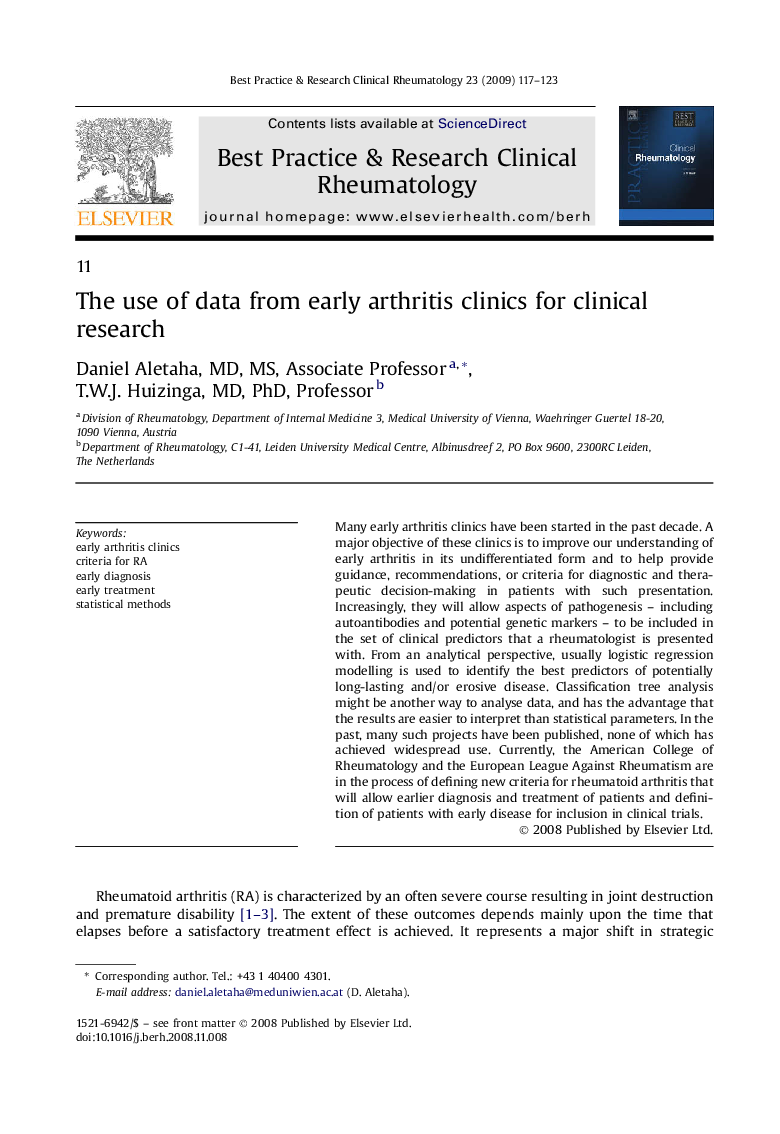| Article ID | Journal | Published Year | Pages | File Type |
|---|---|---|---|---|
| 6114803 | Best Practice & Research Clinical Rheumatology | 2009 | 7 Pages |
Many early arthritis clinics have been started in the past decade. A major objective of these clinics is to improve our understanding of early arthritis in its undifferentiated form and to help provide guidance, recommendations, or criteria for diagnostic and therapeutic decision-making in patients with such presentation. Increasingly, they will allow aspects of pathogenesis - including autoantibodies and potential genetic markers - to be included in the set of clinical predictors that a rheumatologist is presented with. From an analytical perspective, usually logistic regression modelling is used to identify the best predictors of potentially long-lasting and/or erosive disease. Classification tree analysis might be another way to analyse data, and has the advantage that the results are easier to interpret than statistical parameters. In the past, many such projects have been published, none of which has achieved widespread use. Currently, the American College of Rheumatology and the European League Against Rheumatism are in the process of defining new criteria for rheumatoid arthritis that will allow earlier diagnosis and treatment of patients and definition of patients with early disease for inclusion in clinical trials.
